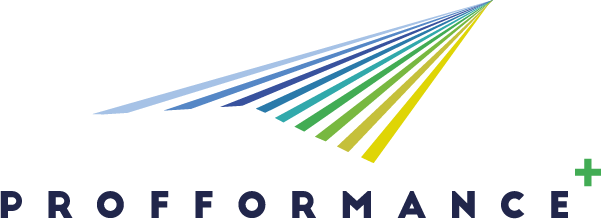DgWEI
Digital Way in Education and Internationalization
- 01 - Education
- 06 – Information and Communication Technologies
- 07 – Engineering, manufacturing and construction
2. Innovative teaching and learning
- Online and offline cooperative and collaborative work – developing engaging dynamics in the learning process
- Innovative physical classroom activities
- Simulation techniques: games, play and role-play – simulation-based learning techniques
- Case-based teaching, case study – object of study to put into practice the knowledge acquired through a real, fictitious or adjusted description/case of reality.
The use of films in academic courses focusing on Management information technology (MIT) and innovation offers a unique opportunity to bridge theoretical concepts with practical understanding. Two classic films, Charlie Chaplin's Modern Times (1936) and The Secret of Santa Vittoria (1969), were used in this context to address complex topics in MIT, digitization, and organizational innovation, transforming traditional learning into an engaging and thought-provoking experience. In particular, the following topics were explained through the films: Modern Times – Automation and Human Adaptation In the Factory Scene from Modern Times, students analyzed the challenges and opportunities presented by industrial automation. This iconic scene was used to introduce the concept of technological disruption, focusing on how the rise of machines redefines labor, productivity, and the human role in industrial settings. Discussion topics included: - Early forms of automation and their parallels to modern digitization. - Human-machine interaction and its evolution into AI and robotics. - The psychological impact of repetitive work, reflecting on how modern IT solutions aim to enhance job satisfaction. The Secret of Santa Vittoria – Leadership and Community Problem-Solving This film presented a narrative on community-driven innovation. By examining how the villagers collaboratively solved the challenge of hiding their wine from occupying forces, students explored themes of leadership, resourcefulness, and teamwork under pressure. Key discussions included: - Innovation as a response to constraints, relating to modern agile development. - Leadership in driving collective action, with parallels to IT project management. - Decision-making processes in uncertain and high-stakes environments. The innovative aspect of this approach lay in its ability to engage students through visual storytelling. Unlike traditional lectures, films provided a multisensory learning experience that encouraged students to think critically and draw connections between historical scenarios and current IT challenges. The use of films also promoted active participation, as students were required to identify and discuss key moments, thereby sharpening their analytical and presentation skills. The outcomes of this initiative were highly encouraging: Enhanced Understanding, Interactive Discussions and Creative Problem-Solving.
Methodology
Tools, equipment, technology used
Outcomes and outputs, main results
Lessons learnt
Adaptability and sustainability of the best practice (for other institutions)
Promotion of best practice
Scope and impact
- Course/department level
- Faculty level
- Institutional level
- Cross-institutional level
- National level
- EU/EHEA/International level
6.1 Digitalization
- Outstanding, innovative, excellent practices of online / blended / hybrid learning
- Innovative, novel methodology in using digital tools/devices in teaching
- Innovative use of digital administration tools
- Other:
film-based education
Reasoning: 1.The platforms ensured easy access to materials, enabling remote participation. Multimedia resources, such as films and case studies, were seamlessly integrated. 2. Interactive tools like Mural and Google Slides supported collaborative activities and discussions. Live feedback mechanisms, virtual breakout rooms, and digital boards made the sessions highly engaging, encouraging active participation and creativity. 3. The course incorporated training on digital collaboration tools, emphasizing ethical practices, such as proper citation and respectful communication in online discussions. Students learned to use these platforms effectively for teamwork and presentation, enhancing their digital literacy. 4. The assessments combined quizzes, online group presentations, and reflective discussions. Feedback was delivered promptly via digital platforms, ensuring clarity and actionable insights for improvement.
6.2 Internationalization
- Outstanding practices of international online collaborative learning
- Students engagement in international projects
- Courses implemented in international cooperation (projects, co-teaching, virtual/blended mobility, etc.)
Reasoning: Films like Modern Times and The Secret of Santa Vittoria provided cross-cultural insights into digitalization and innovation. Collaborative digital tools (Mural, Google slides) enabled teamwork among international students, fostering intercultural exchange. The course design encouraged case studies on global tech trends, promoting understanding of diverse technological landscapes. This innovative approach prepared students for the globalized digital economy.
6.3 Inclusion and diversity, universal design
- Inclusive course design, universally designed divers activities to meet special students' needs
- Innovative teaching methodology for inclusion and meet diverse student needs
- (Innovative) use of devices and tools for inclusion
- Alternative, flexible assessment methods for students with special needs
Reasoning: Inclusion is embedded in the good practice by utilizing diverse learning tools and methods to accommodate varied student needs and preferences. Films like Modern Times simplified complex concepts, ensuring accessibility for students with different learning styles. Collaborative platforms like Mural and Google slide supported participation from all, including shy or remote learners. Group discussions encouraged diverse perspectives, fostering an inclusive environment where all voices were valued.
6.4 Sustainability
- Sustainability goals are addressed in the course(s)
- Teaching material contains profession related sustainability aspects
- Social entrepreneurship projects, service-learning in the topic
- Extra-curricular student activities for sustainability
- Environmental attitude, skill development and assessment either general or profession-related
- Sustainability aspects are considered in all phases of the learning practice - "hidden curriculum"
Reasoning: Sustainability in the good practice is ensured through the reuse of teaching materials, such as films and collaborative tools, for future courses. The integration of digital platforms like Mural and Google slides facilitates ongoing collaboration and can be easily adapted for other subjects. Additionally, the approach of combining film analysis with structured activities creates a scalable model, allowing for consistent and long-term application in different academic settings.

